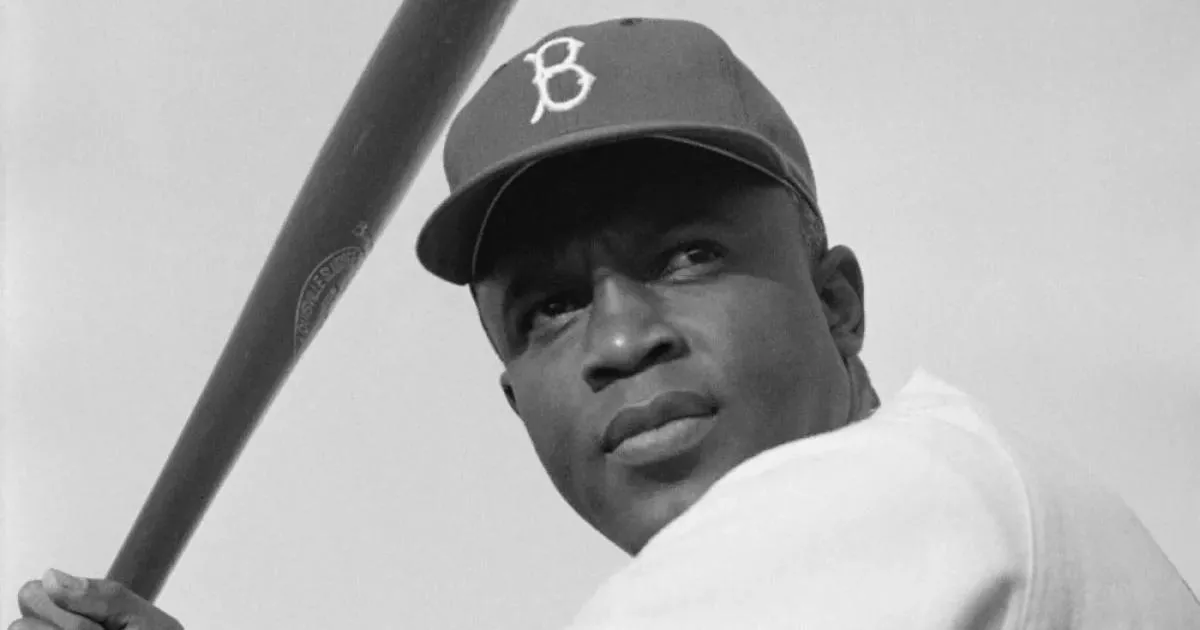How education and upbringing influenced the life of Jackie Robinson. A timeline of key moments.
Jackie Robinson was an American professional baseball player who broke Major League Baseball's color barrier on April 15, 1947, when he started at first base for the Brooklyn Dodgers. His signing ended racial segregation in professional baseball, which had excluded Black players since the 1880s, relegating them to the Negro leagues. Robinson's courage and exceptional talent paved the way for greater racial equality in sports and beyond.
January 31, 1919: Jack Roosevelt Robinson Born
On January 31, 1919, Jack Roosevelt Robinson was born in Cairo, Georgia, to Mallie and Jerry Robinson. He was the youngest of five children.
1920: Family Moves to Pasadena
In 1920, after Jackie Robinson's father left the family, they moved to Pasadena, California.
1922: Rachel Isum Born
In 1922, Rachel Isum, Jackie Robinson's future wife, was born. She later met Robinson while a freshman at UCLA.
1935: Graduation and Enrollment
In 1935, Jackie Robinson graduated from Washington Junior High School and enrolled at John Muir Technical High School.
1936: Tennis and Baseball Accomplishments
In 1936, Jackie Robinson won the junior boys singles championship in the annual Pacific Coast Negro Tennis Tournament and earned a place on the Pomona annual baseball tournament all-star team.
1936: Inspiration to pursue sports
In 1936, Jackie Robinson's older brothers, Frank and Mack inspired Jackie to pursue his interest in sports.
January 25, 1938: Arrest at PJC
On January 25, 1938, Jackie Robinson was arrested after disputing the detention of a black friend by police at Pasadena Junior College. He received a two-year suspended sentence.
May 7, 1938: Broad-Jump Record
On May 7, 1938, Jackie Robinson broke an American junior college broad-jump record with a jump of 25 6+1⁄2 in. at Pasadena Junior College.
1939: Enrollment at UCLA
After graduating from PJC in spring 1939, Jackie Robinson enrolled at UCLA, where he became the school's first athlete to win varsity letters in four sports.
1939: Football Team
In 1939, Jackie Robinson was one of four black players on the Bruins' football team at UCLA, which was considered college football's most integrated team. They went undefeated with four ties at 6–0–4.
1940: Left college for job
In the spring of 1940, Jackie Robinson left college just shy of graduation and took a job as an assistant athletic director with the government's National Youth Administration (NYA) in Atascadero, California.
December 1941: Return to California
In December 1941, Jackie Robinson returned to California to pursue a career as running back for the Los Angeles Bulldogs of the Pacific Coast Football League after playing football for the Honolulu Bears. However, the Japanese attack on Pearl Harbor ended his nascent football career.
1942: Drafted into the Army
In 1942, Jackie Robinson was drafted and assigned to a segregated Army cavalry unit at Fort Riley, Kansas.
January 1943: Commissioned as Second Lieutenant
In January 1943, Jackie Robinson was commissioned as a second lieutenant after finishing Officer Candidate School (OCS) and got formally engaged to Rachel Isum.
July 6, 1944: Bus Incident
On July 6, 1944, Jackie Robinson was taken into custody by military police after refusing to move to the back of an Army bus when ordered by the driver.
August 1944: Acquittal
In August 1944, Jackie Robinson was acquitted by an all-white panel of nine officers on charges of insubordination during questioning.
November 1944: Honorable Discharge
In November 1944, Jackie Robinson received an honorable discharge from the Army and met a former player for the Kansas City Monarchs of the Negro American League, who encouraged Robinson to write to the Monarchs for a tryout.
1944: Athletic Director at Samuel Huston College
After his discharge in 1944, Jackie Robinson accepted a job as the athletic director at Samuel Huston College in Austin, which included coaching the school's basketball team for the 1944–45 season.
1945: Joins Kansas City Monarchs
In early 1945, Jackie Robinson accepted a contract to play professional baseball for the Kansas City Monarchs in the Negro leagues for $400 per month.
February 10, 1946: Jackie Robinson Marries Isum
On February 10, 1946, Jackie Robinson and Isum were married by their friend, the Rev. Karl Downs.
1946: Birth of Jackie Robinson Jr.
In 1946, Jackie Robinson's eldest son, Jackie Robinson Jr., was born.
April 15, 1947: Jackie Robinson breaks the color line
On April 15, 1947, Jackie Robinson started at first base for the Brooklyn Dodgers, breaking the color line in Major League Baseball.
1949: Song About Jackie Robinson
In 1949, Buddy Johnson's song, "Did You See Jackie Robinson Hit That Ball?", reached number 13 on the charts, with Count Basie recording a famous version. The Dodgers also won the National League pennant but lost the 1949 World Series to the New York Yankees.
1949: Testimony Before HUAC
In July 1949, Jackie Robinson was called to testify before the United States House of Representatives' Committee on Un-American Activities (HUAC) regarding statements made by Paul Robeson. He reluctantly agreed to testify to avoid potential negative impacts on his career.
1950: Birth of Sharon Robinson
In 1950, Jackie Robinson's daughter, Sharon Robinson, was born.
1950: Rickey's Departure and Robinson's Disappointment
In late 1950, Walter O'Malley referred to Jackie Robinson as "Rickey's prima donna". Branch Rickey's contract as the Dodgers' team President expired, and he left due to disagreements with O'Malley, becoming general manager of the Pittsburgh Pirates. Robinson was disappointed and expressed his appreciation to Rickey.
1952: Birth of David Robinson
In 1952, Jackie Robinson's youngest son, David Robinson, was born.
1956: Final Season and Retirement Decision
In 1956, Jackie Robinson had 61 runs scored, a .275 batting average, and 12 steals. After striking out to end Game 7 of the 1956 World Series, he was traded to the New York Giants, but the trade was never completed because Robinson had agreed to become an executive with Chock full o'Nuts and sold exclusive rights to his retirement story to Look magazine.
January 5, 1957: Robinson's Retirement
Jackie Robinson retired from baseball at age 37 on January 5, 1957.
1957: Vice President at Chock full o'Nuts & Chairs NAACP Freedom Fund Drive
In 1957, Jackie Robinson became the vice president for personnel at Chock full o'Nuts, becoming the first black person to serve as vice president of a major American corporation. Also in 1957, he chaired the NAACP's million-dollar Freedom Fund Drive.
October 1959: Robinson Protests Segregation at Greenville Airport
In October 1959, Jackie Robinson protested racial segregation by entering the whites-only waiting room at Greenville Municipal Airport, refusing to leave when asked by airport police. He then delivered a speech to the NAACP in Greenville, South Carolina, advocating for complete freedom and urging black citizens to vote and protest their second-class citizenship.
1960: Supports Richard Nixon for President
In the 1960 presidential race, Jackie Robinson supported Richard Nixon against John F. Kennedy, later praising Kennedy for his stance on civil rights.
1964: Founds Freedom National Bank
In 1964, Jackie Robinson helped found Freedom National Bank with Harlem businessman Dunbar McLaurin. This bank was a black-owned and operated commercial bank based in Harlem.
1964: Opposes Barry Goldwater's Presidential Candidacy
In 1964, Jackie Robinson was angered by the presidential election candidacy of conservative Republican Senator Barry Goldwater of Arizona, who had opposed the Civil Rights Act of 1964.
1966: Special Assistant for Community Affairs
In 1966, Jackie Robinson became special assistant for community affairs when Nelson Rockefeller was re-elected governor of New York.
1967: Leaves NAACP Board
In 1967, Jackie Robinson ended his service on the board of the NAACP.
1968: Supports Hubert Humphrey for President
In 1968, Jackie Robinson broke with the Republican party and supported Hubert Humphrey against Richard Nixon in that year's presidential election.
1968: Jackie Robinson Suffers Heart Attack
In 1968, Jackie Robinson suffered a heart attack.
1969: Turns Down Invitation to Old-Timers' Game
In 1969, Jackie Robinson protested against the major leagues' ongoing lack of minority managers and central office personnel, and he turned down an invitation to appear in an old-timers' game at Yankee Stadium.
1970: Establishes Jackie Robinson Construction Company
In 1970, Jackie Robinson established the Jackie Robinson Construction Company to build housing for low-income families.
June 17, 1971: Death of Jackie Robinson Jr.
On June 17, 1971, Jackie Robinson Jr. was killed in an automobile accident at age 24.
1971: Appointed to New York State Athletic Commission
In 1971, Jackie Robinson was appointed to the New York State Athletic Commission by Nelson Rockefeller.
October 15, 1972: Final Public Appearance at World Series
On October 15, 1972, Jackie Robinson made his final public appearance at Riverfront Stadium in Cincinnati, throwing the ceremonial first pitch before Game 2 of the World Series. He accepted a plaque honoring the twenty-fifth anniversary of his MLB debut but expressed his desire to see a black manager in baseball.
October 27, 1972: Funeral Service Held for Jackie Robinson
On October 27, 1972, Jackie Robinson's funeral service was held at Upper Manhattan's Riverside Church, attracting 2,500 mourners. Many of his former teammates and other famous figures served as pallbearers, and the Rev. Jesse Jackson gave the eulogy.
April 15, 2008: Jackie Robinson Foundation Announces Museum Opening
On April 15, 2008, Rachel Robinson announced that the Jackie Robinson Foundation would open a museum devoted to Jackie in Lower Manhattan in 2010.
2010: Projected opening of Jackie Robinson Museum
In 2010, the Jackie Robinson Foundation would open a museum devoted to Jackie in Lower Manhattan
2025: Rachel Robinson Remains an Officer of the Jackie Robinson Foundation
As of 2025, Rachel Robinson, at 102 years old, remains an officer of the Jackie Robinson Foundation.
Mentioned in this timeline
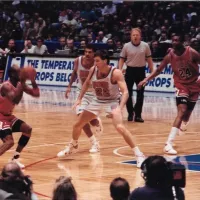
Basketball is a team sport played on a rectangular court...
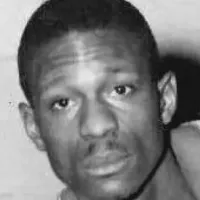
Bill Russell was a dominant American professional basketball player primarily...
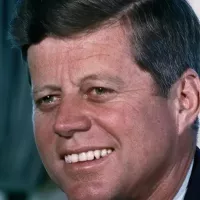
John F Kennedy JFK was the th U S President...
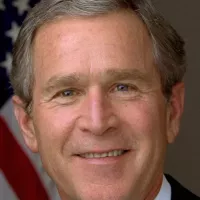
George W Bush the rd U S President - is...

Wayne Gretzky a Canadian former professional ice hockey player widely...
California is a U S state on the Pacific Coast...
Trending
Mike Elko is an American college football coach currently serving as the head coach at Texas A M University a...

7 months ago Yankees' Luke Weaver Likely to Injured List Due to Hamstring Issue
7 months ago Cade Horton promoted to Chicago Cubs; Mets prepare for Horton debut.

2 months ago Learner Tien faces Nuno Borges in ATP Paris Masters 2025 first round.
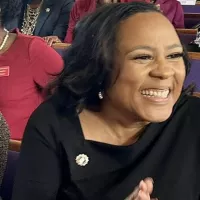
Fani Taifa Willis is an American attorney currently serving as the district attorney of Fulton County Georgia since Notably she...
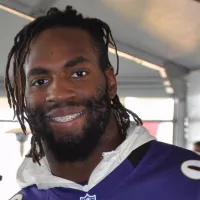
Matthew Judon is an American football linebacker for the Atlanta Falcons He played college football at Grand Valley State setting...
Popular

Candace Owens is an American conservative political commentator and author...

Ilhan Omar is an American politician currently serving as the...

XXXTentacion born Jahseh Dwayne Ricardo Onfroy was a controversial yet...
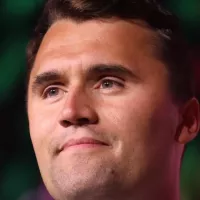
Charles James Charlie Kirk was a prominent American right-wing political...
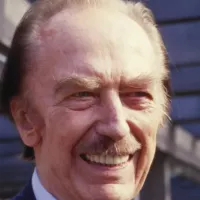
Frederick Christ Trump Sr - was an American real estate...
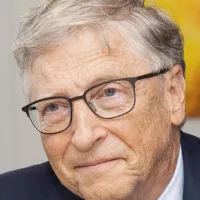
Bill Gates an American businessman and philanthropist revolutionized personal computing...
